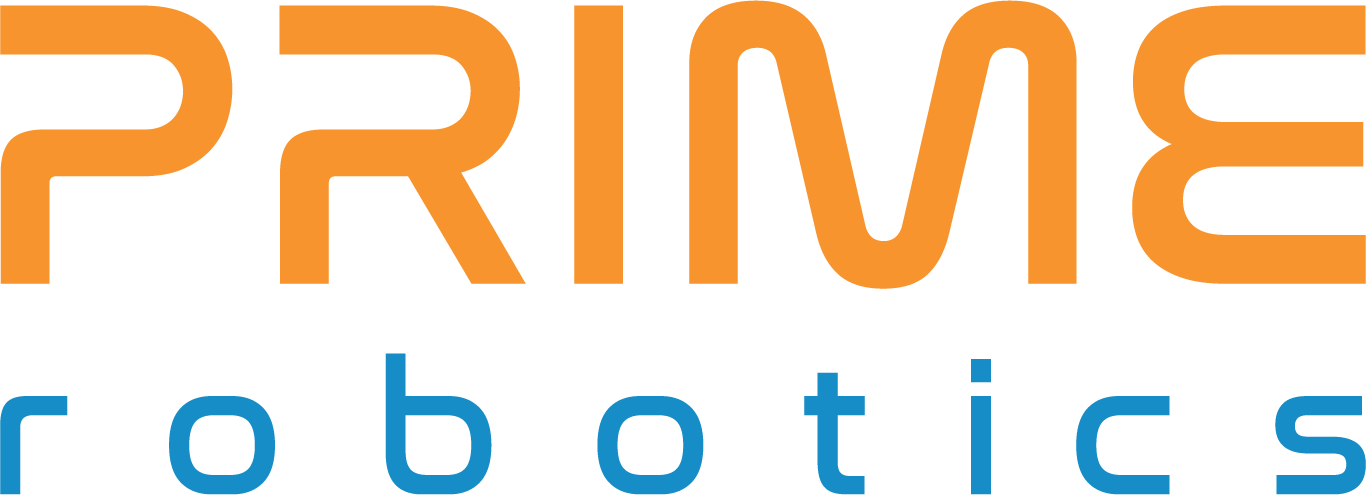Pushed by Amazon to compete with free delivery, often in two days or less, and to provide subscription-based offerings (such as curated box-of-the-month products or routine replenishment of consumables) atop incredibly slim margins, more omnichannel and e-commerce retailers are turning to third-party logistics and fulfillment service providers (3PLs) for fulfillment solutions.
View: Top 50 U.S. & Global 3PLs
“Just about everybody in retail is being dragged along by what Amazon does,” says Robert Lieb, professor of supply chain management at Northeastern University who has surveyed 3PL CEOs for nearly 25 years.
“They are trying to respond with an omnichannel solution to maintain brick-and-mortar stores, but also be competitive in e-commerce.”
“Because a lot of retailers - particularly small ones - can’t afford to put together their own stand-alone e-commerce business with the geographic and inventory positioning capability to meet same-day/next-day delivery expectations, they’re asking 3PLs to help,” Lieb adds, noting it’s become the fastest growing part of the 3PL business in the last five years.
“Last year, of the 3PLs I surveyed, almost 14% of their revenue consisted of e-commerce. The year before it was 18%.”
Brian Gibson, professor of supply chain management at Auburn University, agrees.
“Particularly when e-fulfillment activities involve a kitting activity, such as monthly curated orders that can’t be easily automated, it’s very advantageous for a retailer to pass their customer direct fulfillment onto a 3PL so the retailer can focus on day-to-day store fulfillment. Or, if they can offload repeat replenishment orders to a 3PL and not bring them into their facility, that’s all the better,” he says.
Yet the challenges faced by retailers in meeting the Amazon standard of e-fulfillment expectations are the same ones faced by 3PLs, Gibson says.
“If retailers are struggling to do some of these e-commerce fulfillment services properly and profitably, then how is a 3PL going to make money doing it? They’re not in the same situation of the retailers who are trying to protect market share and drive sales growth. They’re trying to provide profitable services.”
One increasingly common strategy is for 3PLs to no longer try to be all things to all clients, agrees Lieb and Gibson.
“In the early days of 3PLs, anybody who showed up with a bag of money was a good customer, but in the last 10 years the industry has become a lot more customer selective,” Lieb observes.
“Today, 3PLs are more likely to profile the kind of customers they want in terms of size, the value of the products shipped, the frequency of service, and so on. Clients have to meet a certain threshold to be attractive.”
Likewise, adds Gibson, 3PLs are differentiating themselves by focusing on a few e-fulfillment categories - like health and beauty or apparel - and by specific expertise, such as kitting.
“If a 3PL specializes in doing a certain service well, they can better scale their operations and offerings to price themselves to be profitable, yet still deliver service that is within the cost limitations of retailers.”
Marketplace Solution Matches Smaller Retailers, Regional 3PLs
Acting as the “Airbnb for warehousing,” online marketplace FLEXE connects organizations that need warehousing to warehouse operators with extra space. The marketplace currently includes 800 warehouses in 45 markets across North America, says Dave Galgon, director of network development.
“3PLs and first-party operators make their space, capacity, and labor available through FLEXE, and we bring them customers looking for those services,” Galgon explains. “And FLEXE provides the technology platform that enables the two businesses to transact together.”
While client/3PL matching service directories have been around for a long time, what sets FLEXE apart, Galgon says, are both the software and the on-demand nature of its offering - which appeal to smaller retailers and regional 3PLs.
“Our service lets a retailer avoid signing a three-to-five-year contract with a 3PL to standup new capacity in new markets,” Galgon explains.
“The value for 3PLs is that we find the e-commerce customer who’s looking to expand their distribution capacity in a new area. By bringing them together on a common platform to handle orders from the shopping cart to warehouse management system to fulfillment, both gain long-term value.”
Read: FLEXE’s Warehousing, Fulfillment, & Delivery Option Faster than Amazon Prime
Robotic Automation Delivers Flexibility
That more focused approach is enabling certain 3PLs to attain the types of volumes that are substantial enough, and customers who are dependable enough, for them to justify making capital expenditures into select materials handling automation technologies that they’ve historically avoided.
Among these solutions are robotics to help 3PLs flexibly cope with seasonal surges inherent to retail e-fulfillment, as well as with multiple clients and their variable service-level expectations.
Quiet Logistics, a 3PL that exclusively provides e-commerce fulfillment services to online retail apparel and fashion brands, initially implemented Kiva robots. More recently, the company has developed and transitioned to its own Locus Robotics system (profiled in Modern Material Handling May 2016).
The use of robotics as an automated conveyance system addresses what Nick Saunders, Quiet’s senior vice president of sales and marketing, says is the biggest challenge in the 3PL business model: labor.
“We use automation and technology to scale capacity quicker and more efficiently while mitigating the challenges around labor availability, cost, and flexibility,” Saunders explains.
“In e-commerce, we deal with surge periods. The challenge is maintaining a stable workforce in the day-to-day, non-peak hours, yet flexible enough to quickly react to peak demands.”
At Quiet, the robots navigate to warehouse locations where associates are picking orders, and then transit the picked items to pack stations. “Whereas the average warehouse picker walks 16 to 18 miles a day, which takes a lot of time, and equates to a lot of wear and tear on the person, this system mitigates that in terms of speed, time and efficiency,” Saunders says.
To make an investment in 3PL warehousing automation cost justifiable, the entire 3PL model needs to be reworked, says Jim Tompkins, chairman and CEO of MonarchFx, a 4PL alliance that includes transportation providers, 3PLs, technology companies, materials handling suppliers and real estate operations.
The alliance includes warehouse facilities operated by 3PL partners DHL, Kenco and NFI, backed by JDA software technology, and outfitted with Tompkins Robotics automation.
“The Tompkins Robotics systems are designed specifically to do each picking, unit and parcel sortation of apparel and footwear at a return on investment that’s twice as high as traditional shipping sorters,” Tompkins explains.
The robots act similarly to a tilt tray sorter, yet navigate independently to any divert or induction station along the shortest path in a minimal amount of floor space. Because of the overarching software, inventory from multiple clients with a broad range of order volumes can be intermingled, stored and fulfilled within the same system.
“Unlike traditional 3PL warehousing, where a 600,000-square-foot, the multi-tenant facility might be physically walled off between three separate clients, this system can maximize far more diverse and variable volumes,” says Tompkins.
“That makes it much more compelling for sellers of all sizes - from $20 million to billion-dollar retailers and brands - to position their inventory in multiple key metropolitan areas within our network at much more affordable costs than doing it on their own or using a traditional 3PL.”
Tompkins anticipates that with the robotics automation in place, MonarchFX facilities can handle up to 20 customers in a 300,000-square-foot facility, 30 in 450,000 square feet, and 50 in 900,000 square feet.
Light-Directed Picking Boosts Throughput, Accuracy
When Capacity LLC, a 3PL serving omnichannel, and e-commerce retailers, sought an automated fulfillment system, its goals included better-picking speed, accuracy, and throughput with fewer touches, says Thom Campbell, chief strategy officer.
“With paper picking, we had six eyes on each order: a picker, a packer, and a quality control supervisor who confirmed the right units were picked,” he says.
The company implemented semi-automated technologies from Lightning Pick, a Matthews Automation Solutions brand, with mobile pick-to-light carts for batch picking and dual-sided put-to-light put walls for sorting items into orders prior to pack out.
After orders are picked, carts are wheeled to the sortation area and unloaded. A scan of each item illuminates light modules at each put wall cubby, indicating orders requiring that item. To confirm placement, the operator presses a button on the light module. Once all products are sorted and an order is complete, a corresponding light illuminates on the other side of each put bay, alerting packers.
Associates now handle 12,000-plus orders in a normal shift, an increase over their previous rate of 2,500. “On a maximum throughput day, working shifts around the clock, we get as many as 1,000 e-commerce orders through the put wall in any given hour,” says Campbell, adding the system’s high accuracy also eliminated visual checks of each order, saving time.
Additionally, Campbell says giving clients visibility into multiple order statuses, including safety stock and backorders, is also key to keeping 3PL e-fulfillment customers happy. “Ultimately, 3PLs need to set and meet expectations and then communicate how they’re going to deliver on them,” he adds.
“If we tell a client that we’re going to ship their 100 orders a day, same day, as long as they’re received by noon, that’s what they will put on their Website - so we need to meet or beat that. Our technology investments support that objective.”
View Companies: Mentioned in this article
Related Papers
The eCommerce Challenge
Most of today’s retailers and their supply chain advisors understand the shift in retail sales to the online channel but, for many years, the inclusion of gasoline, groceries, and automobile sales in U.S. retail sales numbers masked the true extent of eCommerce penetration. Download Now!
Global E-Commerce Logistics 2016
The report contains Transport Intelligence’s bespoke market size and forecasting data, as well as overviews of some of the world’s leading e-commerce businesses, such as Alibaba and Amazon. Download Now!
Amazon’s Move into Delivery Logistics
Many industry players and experts are waiting anxiously to see what innovations Amazon will come up with next – and above all, whether Amazon will enter into delivery logistics under its own banner. Download Now!
Amazon’s Stranglehold
This report aims to pull back Amazon’s cloak of invisibility, it shows how the company’s tightening grip is stifling competition, eroding jobs, and threatening communities - it presents new data; draws on interviews with dozens of manufacturers, retailers, and others. Download Now!
Chasing Amazon: Building a Dynamic Warehouse Network
Most of Amazon’s competitors are feverishly playing catch-up, and if your company is among them, reassessing your supply chain design, particularly pricing and quick delivery, is a good place to start. Download Now!
The Five “New Rules” of 3PL e-Commerce Fulfillment
The purpose of this white paper is to spell out “The Five New Rules of 3PL e-Commerce Fulfillment.” rules and explain how they will benefit your 3PL warehouse. Download Now!
About the Author
Follow Robotics 24/7 on Linkedin
About the Author
Follow Robotics 24/7 on Linkedin
Article topics
Email Sign Up





























